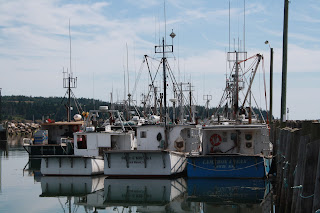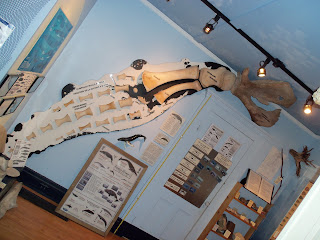One of seal species that is found in the Bay of Fundy is harbour seals (Phoca vitulina). At the Huntsman we have a particular affection for harbour seals because of the aquarium’s resident harbour seals, Loki and Snorkel. Here are some insights into the life of harbour seals.
Harbour seal
· They have a curve in their forehead giving them a dog-like appearance.
· They are inquisitive and playful in the wild and can be seen treading water, diving and rolling, or splashing through the waves.
· Feed primarily on fish, particularly herring, flounder, alewives, smelt and mackerel.
· In the wild they live between 15-20 years.
· At low tide they sun themselves on rocks, sandbars or island.
Sunning themselves while the tide is low.
One of our seals at the aquarium.












































